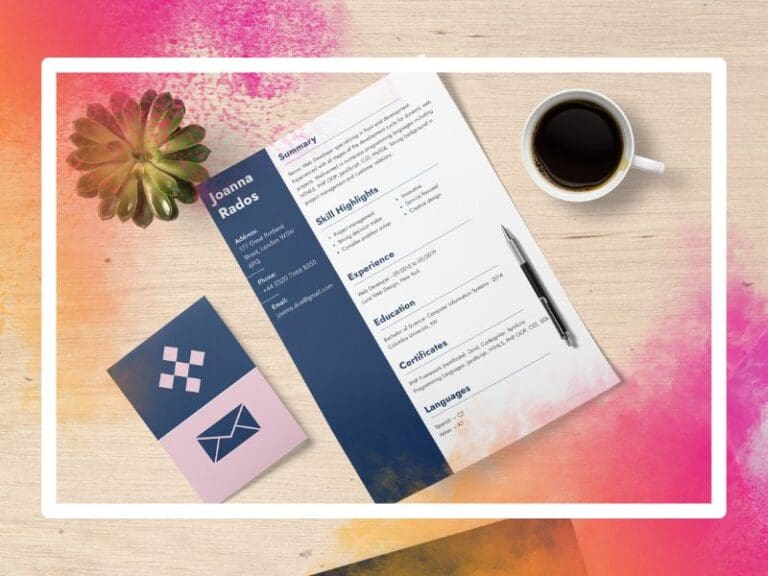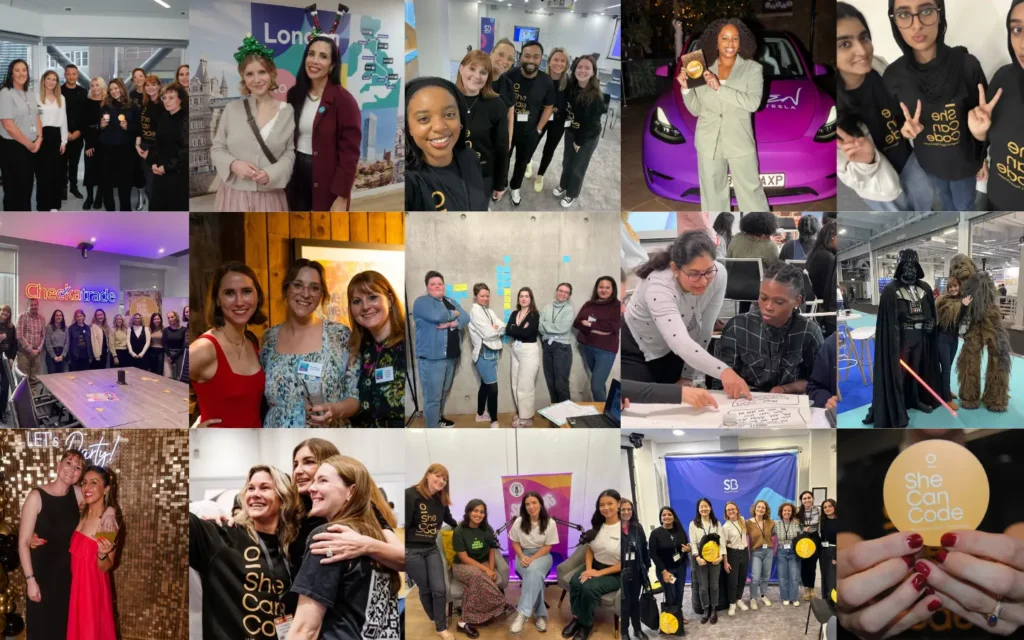For women in tech who are job hunting, job descriptions are more than a list of requirements—it reflects company culture, values, and expectations.
For women in tech, learning to decode job descriptions is a critical skill. It can help you identify opportunities that align with your career goals while avoiding roles at companies that may not be inclusive or supportive.
Here’s how to spot bias and red flags in job descriptions, along with tips for using resources like SheCanCode’s community and our Corporate Ambassadors to make informed decisions.
Watch Out for Gendered Language
Certain words and phrases in job descriptions can discourage women from applying. Examples include:
- Masculine-coded terms: “rockstar,” “ninja,” “dominates,” “aggressive.”
- Overemphasis on years of experience or “must-haves” that aren’t essential.
- Phrases that imply cultural or personality stereotypes: “culture fit” rather than “culture add.”
A study by Harvard Business Review found that job postings with masculine-coded language can reduce the number of female applicants. Look for descriptions that are inclusive, welcoming, and focus on skills rather than overly rigid requirements.
Assess the Requirements Critically
Some job descriptions include an exhaustive list of “required” skills that may not all be essential. Ask yourself:
- Are these requirements realistic for the role level?
- Are they unnecessarily exclusive, potentially deterring candidates from non-traditional backgrounds?
- Are there opportunities to learn on the job or grow into the role?
If many “required” skills are actually nice-to-have, it’s a sign the company might be willing to consider diverse candidates who bring transferable skills and potential.
Look for Red Flags in Culture and Policies
Job descriptions can sometimes hint at a company’s culture or lack of support for employees:
- Frequent mentions of “long hours” or “fast-paced environment” without reference to work-life balance.
- Vague benefits or absence of inclusivity statements.
- Lack of information on flexible working, parental leave, or professional development opportunities.
SheCanCode’s Corporate Ambassadors often provide clear information about their inclusive culture, policies, and employee support systems. For example, bigspark openly highlights mentorship programs, flexible work, and inclusion initiatives, which can serve as benchmarks for comparing other companies.
Examine How Diversity and Inclusion Are Represented
Inclusive companies will often highlight:
- A commitment to gender balance, equity, and diversity.
- Employee resource groups or initiatives supporting underrepresented communities.
- Transparent promotion pathways and pay equity.
Be cautious if the description lacks any mention of diversity or uses vague, generic statements like “we value everyone” without evidence of programs, policies, or measurable goals.
Decode the Language Around Experience and Education
Some companies list highly specific qualifications that may unnecessarily exclude candidates:
- A requirement for a particular degree or certification may not be essential if skills and experience matter more.
- Long lists of programming languages, frameworks, or tools may signal that they’re looking for a “perfect” candidate rather than someone with growth potential.
By understanding which requirements are truly essential, you can confidently apply without self-doubt, even if you don’t tick every box.
Use Job Descriptions to Frame Your Interview Questions
Once you’ve identified potential bias or gaps in the description, you can use this insight in interviews:
- Ask about opportunities for mentorship, training, or career progression.
- Inquire about flexible working policies and employee support programs.
- Discuss inclusivity and representation in teams and leadership.
SheCanCode provides resources to help craft these questions and connect you with mentors or Corporate Ambassadors who can share first-hand insights into company culture.
Leverage SheCanCode Resources
SheCanCode offers several tools to help you decode job descriptions effectively:
- Corporate Ambassadors Directory: Research companies committed to inclusivity and equitable hiring practices.
- Free Resources: Guides on CVs, portfolios, and interview preparation, including how to interpret job ads.
- Community Mentorship: Connect with experienced women in tech who can provide advice on spotting bias and negotiating offers.
By using these resources, you can approach job applications strategically and avoid roles that may not align with your values or career goals.
Final Thoughts
Job descriptions are more than just a checklist—they can reveal a company’s culture, values, and inclusivity practices. By decoding language, critically assessing requirements, and looking for red flags, women in tech can make informed decisions about where to apply and how to advocate for themselves.
When possible, cross-reference job postings with SheCanCode Corporate Ambassadors and leverage our community resources. This approach not only improves your chances of landing a supportive role but also builds confidence and clarity throughout your job search journey.
Remember: knowing how to read between the lines of a job description is a superpower in today’s competitive tech landscape. Use it to find workplaces where you can thrive.
If you’re looking for you’re next opportunity, check out our job board here.








